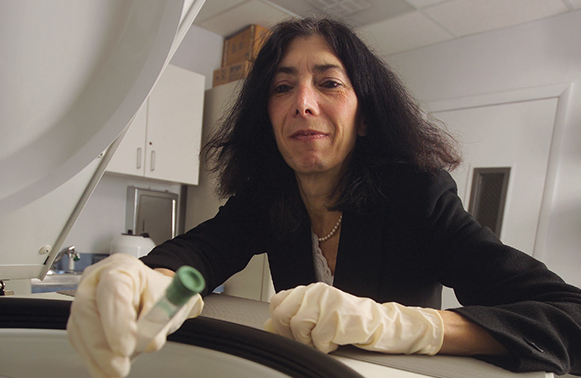Advancing Research Exponentially

Advancing Research Exponentially
August 14, 2018
Advancing Research Exponentially
An Update on AMP
Lupus nephritis (LN), one of the dreaded complications of lupus, causes patients to suffer, sometimes for decades, with no new treatment in sight. But now is the time to leverage technology for major advances, which is exactly what the Accelerating Medicines Partnership (AMP) is doing.
AMP covers a lot of ground. In terms of lupus research, it seeks to find new targets that are treatable in LN … that will change the course of LN, and perhaps even give us clues about preventing the disease. We hope that it may indicate which patients might do best on which therapies — so that, if successful, we can harness the idea of personalized therapy.
In Phase 0, for the first time, we mastered the art of dissociating cells from a human kidney diseased by lupus. It became clear that we could take very tiny pieces of kidney and analyze what the cells are telling us. Equally important, we found that tissue could be cryopreserved in a way that allowed us to procure such tissue from across the nation.
We have also learned more about what tubular cells are expressing when they have been exposed to certain cytokines, such as Interferon Alpha. Cytokines play an important role in disease pathogenesis. Antibodies to that particular cytokine are actually in a clinical trial, so it will be exciting to see if that therapy makes sense. And we have gained a new perspective on different inflammatory cells in the kidney: B cells, T cells, and macrophages.
In Phase 1, we collected over 100 LN biopsies, 72 of which met our inclusion criteria. We now plan to collect renal biopsies from 200 patients with LN. So far we are at about 88% of target enrollment, which is remarkable. Interestingly enough, we can’t enroll patients as fast as the technology is developing. We’re very strongly positioned to embrace technology as it comes along.
When we started the study, we were only able to look at 96 cells per kidney. Then in the next phase, we could see 300-400 cells in the kidney. And now, we’re into the thousands of cells per kidney with the new technologies. I am so thrilled to be part of this incredible network because many of the most brilliant minds in the field are collaborating as a network with the single aim of finding breakthroughs in lupus research.



